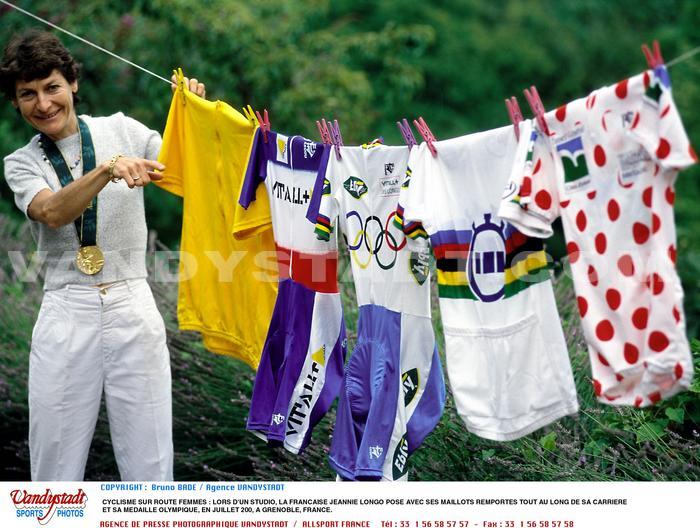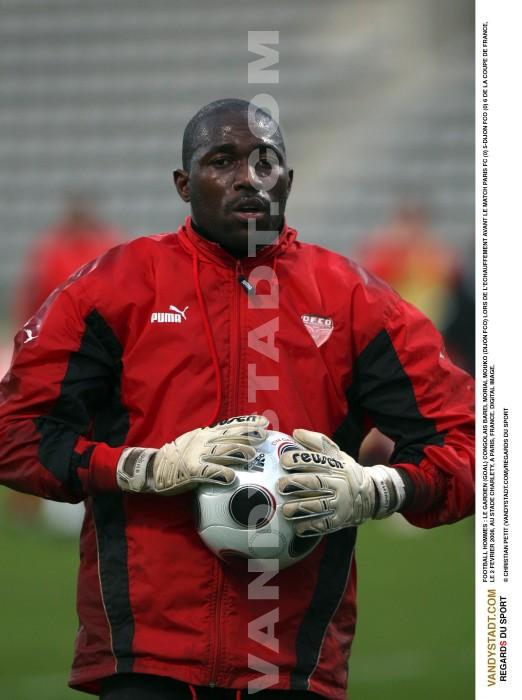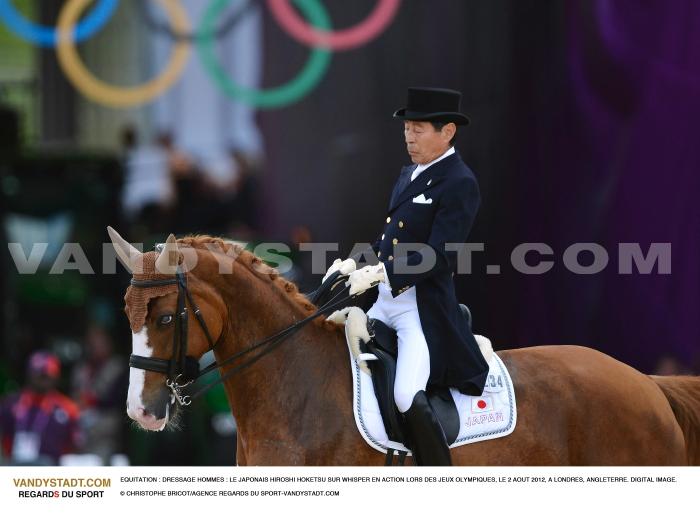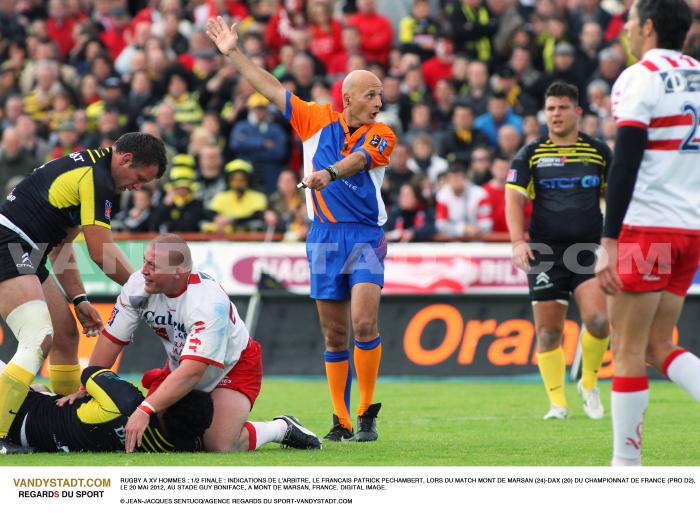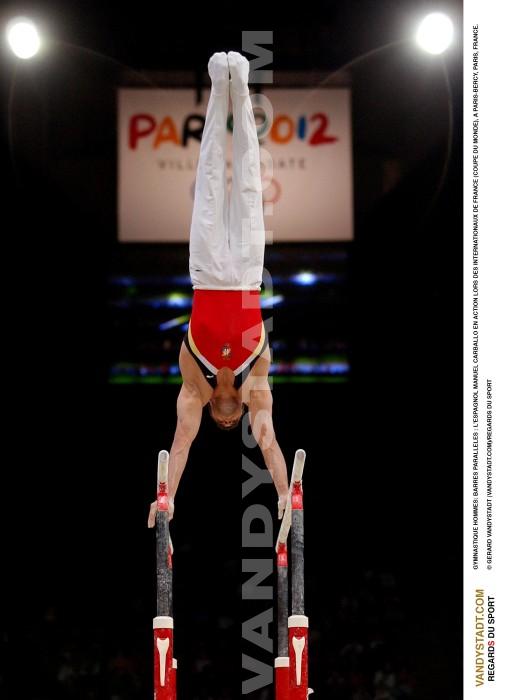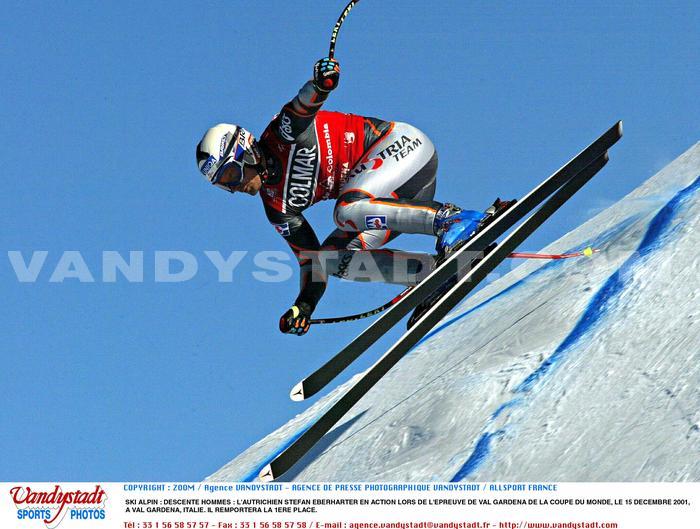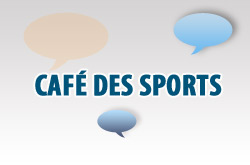Vol libre - Free Flight history
Free Flight

History
We can say that the free flight time from the beginning of aviation, for the first gliding flights were made in Germany by Otto Lilenthal between 1890 and 1895. He has completed over 2000 and even reached an altitude of 300 m. Octave Chanute designed beautiful wings multiplane he experimented between 1896 and 1900 near Chicago. John Montgomery made April 29, 1905, California, operator of a glider down completely controlled after release from a balloon at 1,200 m altitude.
The idea of free flight is a NASA engineer, Francis Rogallo, which has a patent for improved parachute (delta-shaped) for the recovery of space vehicles. Finally NASA did not use this technique, but fans of kites are interested and in 1962 an Australian water skier, John Dickenson, swapped his classic kite with which he enjoys flying over water cons a delta wing. In 1969, Dave Killbourne performs first "flight slope.
The kite 'controllable', was designed by the Englishman Peter Powell in the 70s. The craft in the name of 'Diamond', with its structure of diamond runs using two joysticks connected son connected to the wing. Currently it uses Delta pilots form faster and aerodynamics that can reach 85 km / hour.

In France, Bernard Danis, water skiing champion, discovered the new American during his international tours. He founded one of the first manufacturers of gliders. This is the start of practice in France of the delta.
Paragliding second discipline of the free flight, is more recent. The first flights are assigned to the French pilot Jean-Claude Andre Betemps and Swiss Mieussy Bohn in Haute-Savoie. The idea of these two paratroopers was to practice precision landing at lower cost and save the plane and mounted so they tried to take off from a mountaintop. Only seven years later, when demand evolved into flight duration and greater autonomy to use that manufacturers began to make real change sails from 1985 symbiosis with the delta wing has occurred. The glider was truly born.
The French federation
Created in 1974, the French Federation of Free Flight was the delegation from the Ministry of Youth and Sports to manage the activities of delta, paragliding, kite-surfing and kite. It ranks 2nd among the federations aeronautical France behind the FNA.
At its inception, it consisted only discipline with Delta about 500 licensees. Its evolution has been rapid since, 20 years later, the number of licensees was approaching the 30,000 graduates in 1993. Today there are 40,000 licensed.
Over the past decade, the Federation has helped over 60,000 people learn to fly, more than 100,000 have made their first flight, and each year more than 2,000 pilots have been practicing the competition.
Through its schools labeled (over 120), the Federation provides welcome beginners and pilot training to federal patent.
To achieve the main objectives of the security involved with the federation of manufacturers to work with them to develop wings increasingly safe and effective, tailored to different levels of driving, from beginner to competitor top athlete.
Please take 14 years for the practice of hang-gliding and paragliding.
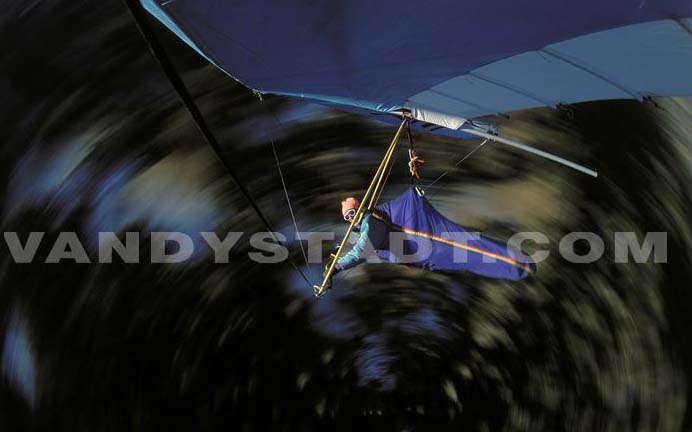
40 000 redundant - 501 Club
One can easily carry distances over 300 km to 3 000 meters or more (even up to 5000 m).
The world record
men is held by the American Larry Tudor who has traveled 495 km to an altitude of 4 343 meters. The world record distance paragliding in women is 402 km.
Rules and Principles
Principle
The free flight is the easiest way to fly, it is akin to gliding of some birds such as gulls, gulls, most large raptors using the updrafts.
This facet of the free flight of all other forms of flight, takeoff and landing foot and the absence of any artificial energy as the engine.
The wings of free flight
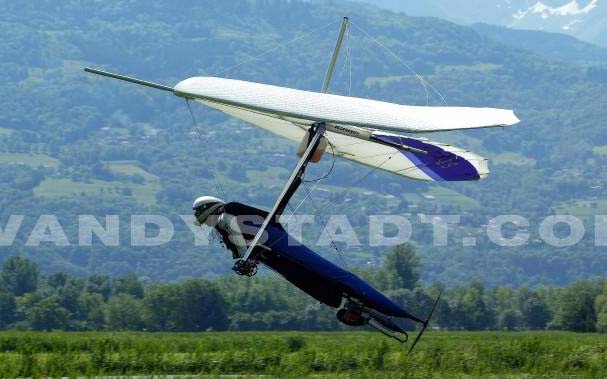
The delta-wing hang glider or
This PUL (Ultra Light Glider) is composed of a triangular steel structure light tubes used in framing a sail whose surface varies from 13 to 18 m2 according to the weight of the driver.
It is the weight of the driver that controls the movements of the delta. The pilot moves his body to the left: this causes a tilt to the left that starts a left turn. Same thing right. To accelerate the pilot moves his body forward, to stop, backwards. It is therefore a pilot gravity.
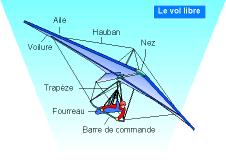
Paragliding
Paragliding, born in Haute-Savoie in 1978, is a smooth glider, which very schematically, can be compared to a large cloth bag, open on its longest side and closed on the other three sub -
ized in "boxes" themselves
ized into "cells".
Thus constructed, this "bag" of 25 m² can fill with air when we run with and take the inflated profile which allows it to fly.
This wing is connected to the pilot's body hanging by the harness lines in which he is strapped.
In paragliding, the steering is done by command: the brakes can essentially turn, slow down, speed up or landing.
If you want to turn right, right braking and from the left, same thing on the left. By lowering both brakes simultaneously will slow and in releasing them, it accelerates. There are two disciplines, aerobatics and cross.
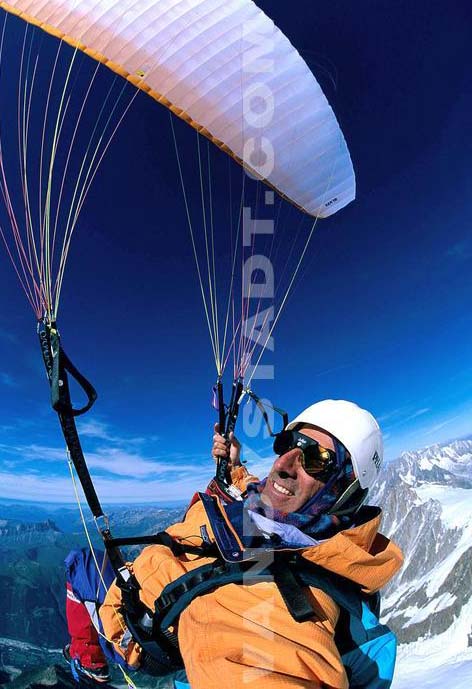
A paragliding competition in cross competes around a marked course from 30 to 200 km. A competition is growing about ten days because of weather. The drivers compete in round one day and must cross the GPS beacons (from zero to seven) before reaching the 'goal' (landing zone). The winner is the one loop this course as soon flying over mandatory GPS points (using a GPS, a radio and an alti-vario, an instrument that indicates the altitude). The drivers are installed in a 'cockpit' driving.
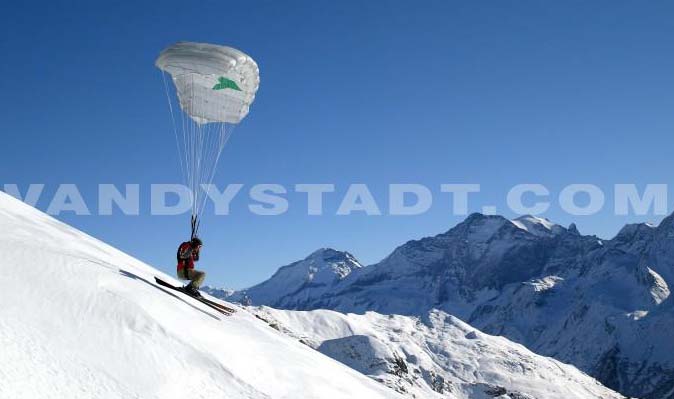
The rigid wings
"Swift", "Experience" ... the wings are rigid class 2 in the FFVL, class 1 being the delta, paragliding Class 3.
Located between the delta and the glider, the wing rigid, more commonly known as "Swift" is a superb machine with his 11.89-meter wingspan, its 12.5 m2 and 60 kg. With a finesse of 20 to 60 km / h or 25 to 65 km / h for a wing fairing, a sink rate of 0.7 m / second, this machine can easily reach over 100 km / h can make good flights, with exceptional performance.
Posable off and walk, also in tow, these magnificent machines, manufactured in high-tech material Kevlar, carbon ... are flying wings with elevons controlled by a rigid linkage, the flaps being airbrakes end of the race.
The driver was lying on his back in a hammock with or without fairing. The practice of rigid requires good knowledge of the air environment, a serious prior training, simulator training, lesson of dual flying. In 1995, 45 drivers have been trained in swift. Stored in a box of three removable parts, the swift is transportable on the roof of a car.
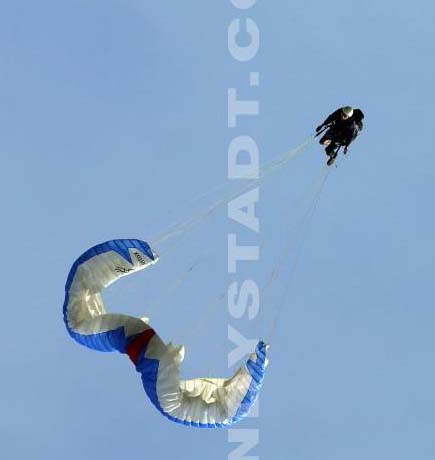
Kite
Breeze of yesterday, the kite has become over time a real sport through the use of fiberglass and carbon, and webs of spi
The two senior French racing scene are the "Rencontres Internationales" of Berck sur mer (in April) and Dieppe (in September).
Other uses of the kite
- The use of kites to fish for billfish in the Celebes Islands in Indonesia.
- Use science used by meteorologists.
- Tool such as the Rokkaku battle, the kite fighting Japanese, born of ancient traditions.
The world record long jump with a kite is 83.80 m.
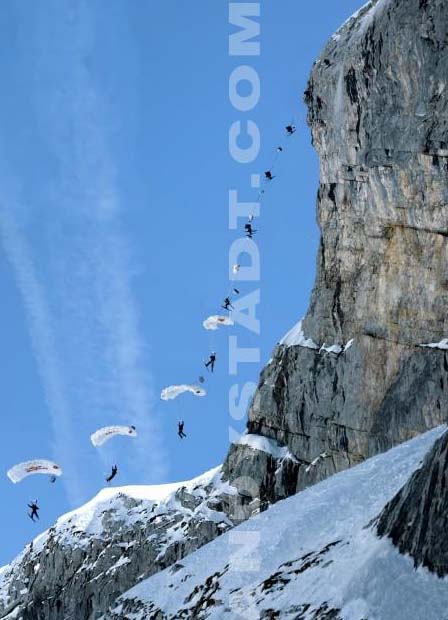
Copyright Sportquick/Promedi








